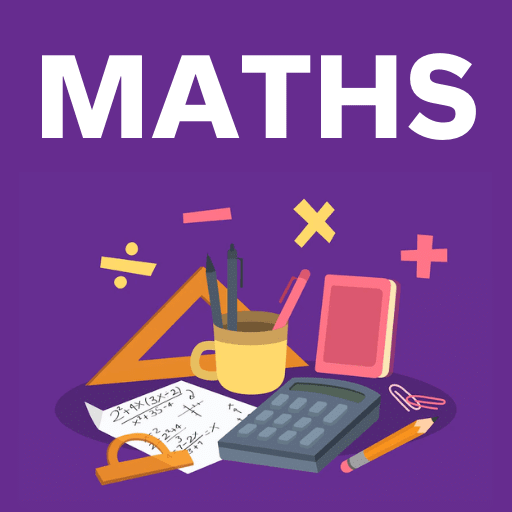Fill in the Blanks
Q1: When placing the number 3600 on a number line, it would be placed just after ________.
Ans: 3000.
Solution: 3600 is slightly above 3000 but below 4000, so it is placed just after 3000 on the number line.
Q2: The number of digits in 9999 is ________.
Ans: four.
Solution: The number 9999 has four digits: 9, 9, 9, and 9.
Q3: In a grid, a supercell is a number that is ________ than its neighbors directly above, below, left, and right.
Ans: larger.
Solution: A supercell is defined as a number that is larger than all of its neighboring numbers in the grid.
Q4: The digit ‘7’ appears ________ times in the tens place from 1 to 100.
Ans: 10.
Solution: The digit ‘7’ appears in the tens place in the numbers 70 to 79, making it appear 10 times.
Q5: On a 12-hour clock, the time 10:10 is interesting because it forms a ________ pattern.
Ans: mirrored.
Solution: The time 10:10 is mirrored because the hour (10) and minute (10) digits are symmetrical, forming a mirror image.
True or False
Q1: The number 2754 would be placed between 2000 and 3000 on a number line.
Ans: True.
Solution: 2754 is greater than 2000 but less than 3000, so it correctly falls between these two values on a number line.
Q2: The number 131 is not a palindrome.
Ans: False.
Solution: 131 is a palindrome because it reads the same forward and backward.
Q3: On a number line, 9950 would be placed exactly at 10,000.
Ans: False.
Solution: 9950 is slightly less than 10,000, so it would be placed just before 10,000 on a number line.
Q4: The digit ‘7’ appears 100 times in the tens place in numbers from 1 to 1000.
Ans: True.
Solution: The digit ‘7’ appears 100 times in the tens place across the numbers 70-79 in each hundred interval (e.g., 170-179, 270-279, etc.).
Q5: If you reverse the number 123 and add it to the original number, you will always get a palindrome.
Ans: False.
Solution: Reversing 123 gives 321, and adding them results in 444, which is a palindrome. However, not all numbers will yield a palindrome when reversed and added (e.g., reversing 1234 and adding does not result in a palindrome).
|
|
Test: Number Play - 1
|
Start Test
|
Solve the Following
Q1: Place the following numbers on a number line: 2180, 3050, 5300, 8400. List them in order from smallest to largest.
Ans: Smallest to largest: 2180, 3050, 5300, 8400.
Solution: 2180 is closest to 2000,
3050 is just after 3000,
5300 is slightly after 5000,
8400 is close to 9000.
The correct order on the number line from smallest to largest is: 2180, 3050, 5300, 8400.
Q2: If you fold a piece of paper in half, what type of angle does the fold represent?
Ans: A straight angle (180°).
Solution: When you fold a piece of paper in half, the fold creates a straight line. A straight angle is exactly 180°, and it looks like a straight line. Therefore, the fold represents a straight angle.
Q3: Calculate the sum of the digits for the number 2754 and determine if it matches the sum for the number 2647.
Ans: 2754: 2 + 7 + 5 + 4 = 18.
2647: 2 + 6 + 4 + 7 = 19.
Solution: The sum of the digits for 2754 is 18, and for 2647 is 19.
The sums do not match, as 18 is different from 19.
Q4: Create a 4-digit number where the digit sum is 15, and the number is a palindrome. Provide the number.
Ans: Example: 3663.
Solution: The number 3663 is a palindrome because it reads the same forward and backward.
The sum of the digits (3 + 6 + 6 + 3) equals 18, which does not match the required sum. Let's try again:
2642: 2 + 6 + 4 + 2 = 14 (still not matching).
A correct answer that matches both criteria might be 2643 (2 + 6 + 4 + 3 = 15), but it's not a palindrome. Thus, a suitable palindrome must be carefully selected.
Creative and Application-Based Questions
Q1: Mahi is placing numbers on a number line between 1000 and 10,000. She needs to place the number 5030 correctly. Explain where she should place it and why.
Ans: Mahi should place 5030 slightly after the midpoint between 5000 and 6000 because 5030 is just above 5000 but much lower than 6000.
Q2: Imagine you have a number grid where you want to find a supercell. Describe the steps you would take to identify a supercell in a 3x3 grid.
Ans: Steps to identify a supercell:
- Look at each number in the grid.
- Compare it to its neighbors directly above, below, left, and right.
- If the number is greater than all these neighbors, it is identified as a supercell.
- Repeat for each number in the grid to identify all supercells.









































